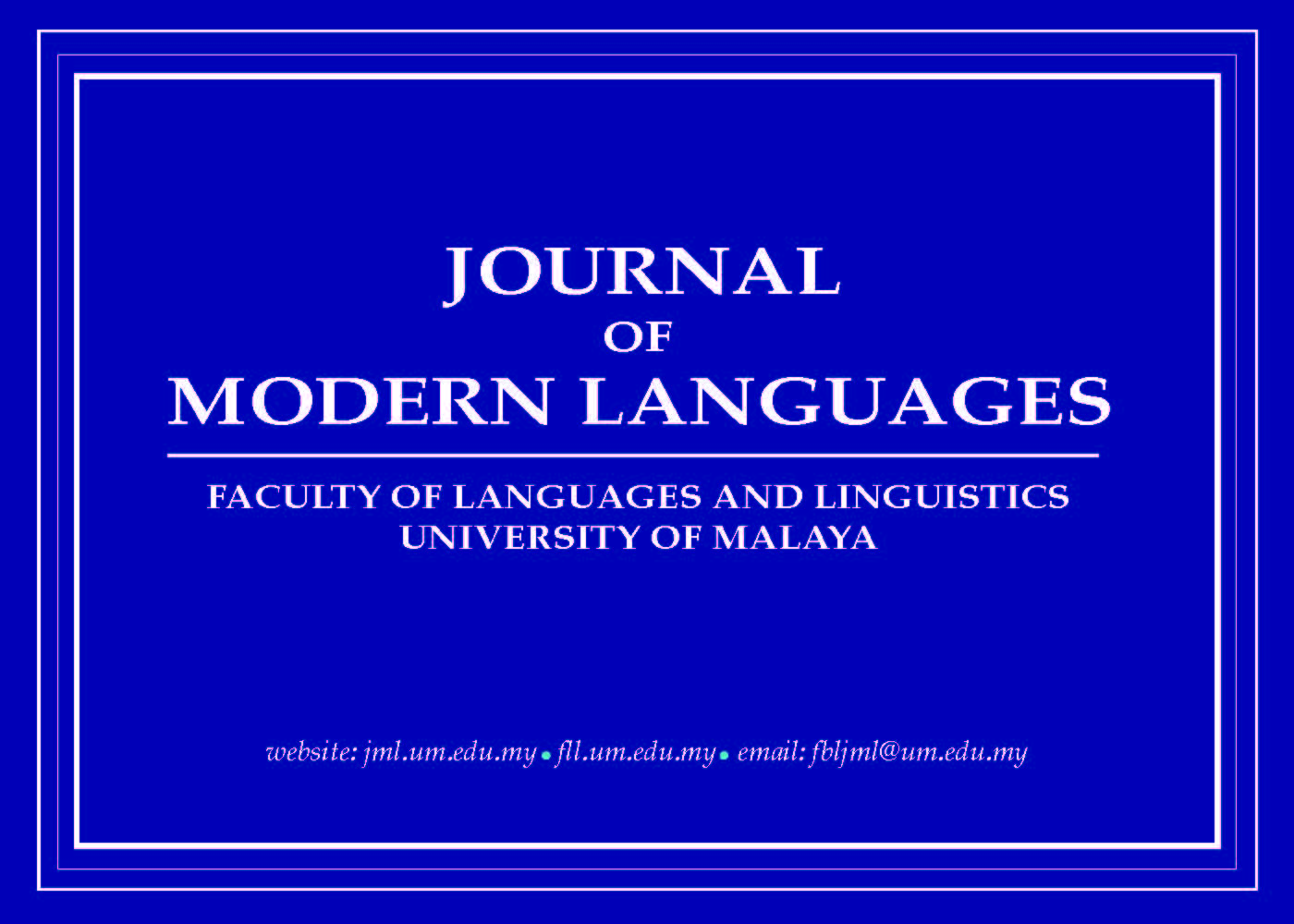Editorial
Main Article Content
Abstract
In this first issue of Volume 33, we delve into the rich tapestry of linguistic diversity and academic discourse, showcasing a range of studies that shed light on various facets of language use, maintenance, and communication. The collection of articles in this issue offers valuable insights into the ever-evolving world of language.
The first article in our lineup, Language Shift and Maintenance: A Case Study of the Telugu Community in Bagan Datoh, Perak (Malaysia), takes us to Bagan Datoh, Perak, where the Telugu language, despite being a minority language in Malaysia, continues to thrive in specific domains. This case study illuminates the dynamics of language choice among different generations and provides hope for the revitalization of Telugu among the younger generation.
The second article, Metadiscourse Markers in Abstracts of Linguistics and Literature Research Articles from Scopus-Indexed Journals, shifts our focus to the world of academic writing, specifically the use of metadiscourse markers in abstracts. It highlights the crucial role these markers play in structuring and presenting research arguments. The comparative analysis between linguistics and literature abstracts provides valuable insights into disciplinary differences in the use of these markers.
Our third article, An Exploratory Analysis of Linking Adverbials Used by Filipino, Pakistani, and Thai Writers of English, undertakes a contrastive interlanguage analysis, shedding light on how students from the Philippines, Pakistan, and Thailand use linking adverbials in their English academic writing. The importance of understanding the distinct production tendencies of various English varieties is emphasised in this article.
Turning to a sensitive topic in the Malaysian context, the fourth article, Female Circumcision in Malaysia: Challenges and Lessons Learned in Using Focus Groups through an NGO-Academia Collaboration, explores female circumcision and the challenges faced in conducting research on this subject. It highlights the collaborative efforts between academia and a local NGO, offering valuable insights into data collection via focus group discussions.
The fifth article, Prosodic Marking of New and Given Information in English and Mandarin by Chinese Speakers, ventures into the realm of prosody and its impact on language comprehension. Focusing on Chinese English as a Foreign Language learners, it investigates how Mandarin influences the prosodic marking of new and given information in English, shedding light on potential areas of misunderstanding.
Our final article, Privacy Policy Pop-up: A Genre Analysis of Journal Websites’ HTTP Cookies, takes a dive into the world of online privacy and transparency. It analyses the communication of transparency through HTTP cookies on academic journal websites, uncovering the rhetorical strategies employed to inform users about data privacy.
In this diverse collection of articles, we invite readers to explore the multifaceted world of language and academic discourse. Each study offers unique insights into the complexities of communication and the richness of linguistic diversity. We hope this issue serves as a valuable resource for scholars, researchers, and language enthusiasts alike, encouraging further exploration and understanding of these vital aspects of our academic and cultural landscape.
Last but not least, I would like to express my heartfelt thanks to all the contributors, reviewers and readers of this Journal. My special thanks also go to all the members of the Editorial Board and Advisory Board for their significant contributions.
Editorial Board
Prof. Dr. Stefanie Pillai
A.P. Dr. Paolo Coluzzi
A.P. Kim Keum Hyun
Dr. Azlin Zaiti Zainal
Dr. Charity Lee Chin Ai
Dr. Ng Lee Luan
Dr. Noor Aqsa Nabila binti Mat Isa
Dr. Soh Siak Bie (journal manager)
Dr. Thanalachime Perumal
International Advisory Board
Prof. Dr. Richard Fitzgerald (University of Macau, China)
Prof. Dr. Stephen Hall (Sunway University, Malaysia)
Prof. Dr. Jan Hardman (University of York, United Kingdom)
Prof. Dr. Jason Miin-Hwa Lim (Universiti Malaysia Sabah, Malaysia)
Prof. Dr. Dennis Tay (The Hong Kong Polytechnic University)
Assoc. Prof. Dr. Shirley Dita (De La Salle University, Philippines)
Assoc. Prof. Dr. Michelle M. Lazar (National University of Singapore, Singapore)
Assoc. Prof. Dr. Jonathan Newton (Victoria University of Wellington, New Zealand)
Dr. Mário Pinharanda-Nunes (University of Macau, China)
The future issues of this Journal will be in the capable hands of Prof. Dr. Stefanie Pillai, whom I believe will be able to lead the Journal to greater heights.
P.S.: An Appendix with a compilation of highlighted articles from the past five years is also included here for your reference.

